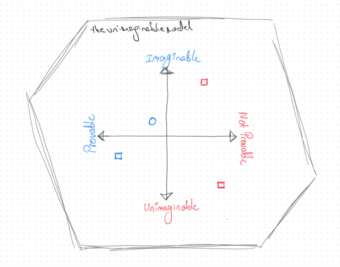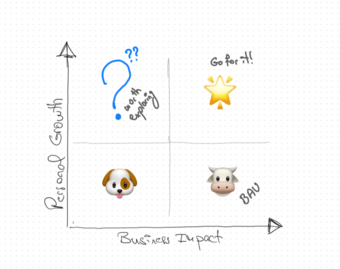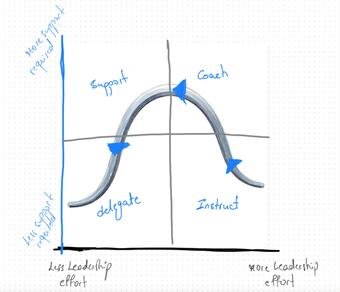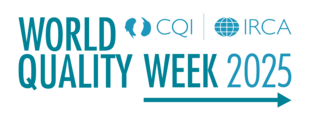
How to think differently: people

To kickstart this new three-part series, Rashad Issa, Chair, CQI Board of Trustees, explores how thinking differently about quality culture fosters innovation, efficiency and improvement to create a lasting impact.
This year’s World Quality Week theme, ‘think differently’, focuses on alignment, performance and people; all playing a part in our ability to cultivate a successful quality culture.
For a quality culture to foster innovation, efficiency and improvement, it will no doubt rely on the people involved. In this blog, I’ll explore people in the context of the theme, simplifying into two categories: oneself and others. And to simplify it even further, a diagram in Mikael Krogerus and Roman Tschappeler’s book, ‘The Decision Book’ (2008) shares strategies on:
- how to understand yourself
- how to understand others
- how to improve yourself
- how to improve others
The book has 50 different strategies in these four areas. Here I’ll share four thought-provoking strategies that will help you consider your next alignment and performance efforts.
How to understand yourself: the Unimaginable Model
This model explains how everything is connected and helps answer the question: ‘What do you believe in that you cannot prove?’ If you want to delve deep into yourself, try to plot one idea in each quadrant. How does that impact the decision you make?
Now, imagine each team member in your organisation is doing this exercise. Can you see how it exponentially grows and gets complicated?

My own take on it is that if you are embarking on an initiative to enhance the quality culture of an organisation, help people imagine the world you are creating – and the rest will follow.
Rashad Issa, Chair, CQI Board of Trustees
How to understand others: the Appreciative Inquiry Model
One of the interesting models shared in the book is called the Appreciative Inquiry (AI) Model (not artificial intelligence). The theory was being developed and is attributed to David Cooperrider. It explains that each person has a different approach to things, and to help people and businesses bridge these differences, you should focus on what is going well rather than what the problem is. The theory proposes that there are four types of people:
- fault-finder
- dictator
- school teacher
- appreciative inquiry thinker
The fault-finder would say, ‘This is good, but...’, the dictator would say, 'No’, the school teacher would say, ‘No, because...’, while the AI thinker would say, ‘Yes and...’ I think this is an interesting concept to be mindful of when you want to foster an environment of thinking differently. (You can explore my articles on personality traits and the cycle of motivation.)
How to improve yourself: the Boston Consulting Group Model
The Boston Consulting Group (BCG) Model is used in the book as a model to improve oneself. The BCG developed a model to assess the value/impact of an investment. It’s frequently used in workshops and brainstorming sessions to help businesses determine which product is the next best thing.
In this instance, the product is YOU. Personally, I think this is a good concept to follow; instead of using it for the next best go-to-market innovation, use it for your development and up-skilling.
Rashad Issa, Chair, CQI Board of Trustees
And in place of market share vs market growth, use it for personal growth and business impact. The same four boxes apply: cash cow, dog, question mark and stars.
- Cash cow: high business impact, low personal growth. These are your business-as-usual activities – do not cut them off. Look at ways to make them more efficient and use AI (artificial intelligence) to introduce automations and reporting to free your time.
- Dog: low business impact and low personal growth. These are activities you can totally remove.
- Question marks: activities that have low business impact (so far) but have high personal growth. These initiatives are worth investigating. You do not know what positive impact your personal growth and experience will have on the business.
- Stars: these are the key initiatives that can have a huge business impact and high personal growth. They are likely to involve you stepping out of your comfort zone as well.

How to improve others: the Hersey-Blanchard Model
The Hersey-Blanchard Model is also known as the situational leadership model. This model takes the people style to the next level. It suggests that leadership style should not be adapted to the people you lead, but rather to your working situation. In other words, if you are working with one colleague only, all situations could apply. The model differentiates between four approaches:
- instructing
- coaching
- supporting
- delegating

The level of support needed by your stakeholders or teams dictates the leadership style you should adopt.
And because you are a quality professional, make sure you are familiar with the six hats model. You can find out more about it here: How to wear six hats to make better decisions.
I hope you found the strategies useful to trigger a different way of thinking for you and your teams. Look out for the second blog in this series focusing on alignment.
All illustrations courtesy of Rashad Issa
Every fresh idea starts with a new perspective.
We’d love to know how you're celebrating World Quality Week 2025 – and what approaches, mindsets or tools help you think differently about quality.
World Quality Week 2025: think differently

Join us to challenge traditional approaches to quality management and embrace new ways of thinking.
Become a member
Take your quality career to the next level by becoming a member of the CQI or an IRCA Certificated Auditor.
Discover Typical Competence Profiles

Typical Competence Profiles and Career Pathways Map, navigating your career pathway
